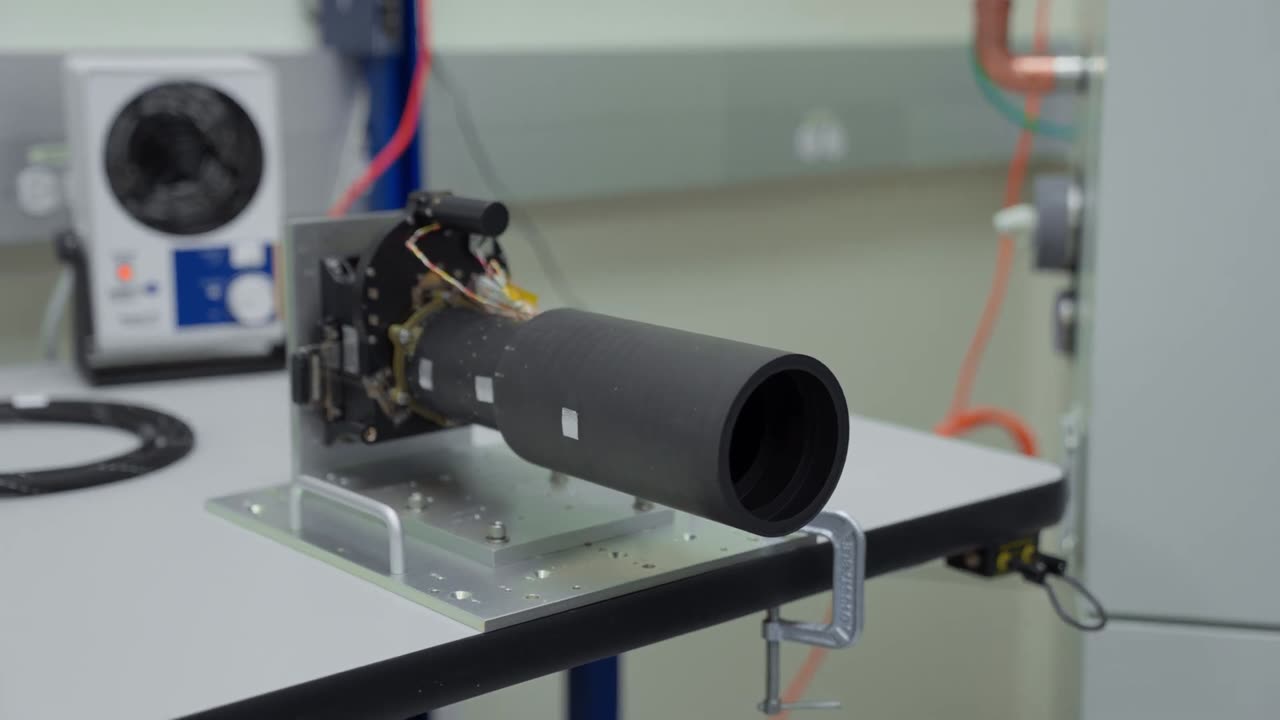Premium Only Content

How Will #MissionToPsyche See Its Target Asteroid?
#asteroid #targetasteroid #missionpsyche #psyche #mars #moon #space #rocketlaunch #spaceexploration #marsexploration# nasamission #nasaspacemission #spacemission #astrology #spaceimaging #spacetechnology #spacescience #moonexploration #jupiter #stakleytingo #wolfchamp #lunar #lunarexploration #spacecraft #spacrocket #spaceshuttel
How Will #MissionToPsyche See Its Target Asteroid?
NASA’s Psyche spacecraft will use highly sensitive cameras to allow scientists to see a metal-rich asteroid that’s never been imaged up close before.
Planetary scientist and Psyche mission co-investigator Jim Bell of Arizona State University, along with his instrument team, developed this critical technology in collaboration with Main Space Science Systems.
Psyche’s multispectral imager consists of a pair of identical cameras with filters and telescopic lenses that will photograph the surface of the asteroid in different wavelengths of light. It will provide the data needed to build a digital terrain model of the asteroid’s surface, contribute to revealing Psyche’s geochemistry and composition, and help with navigation.
Whether the asteroid Psyche is the partial core of a planetesimal (a building block of the rocky planets in our solar system) or primordial material that never melted, scientists expect the mission to help answer fundamental questions about Earth’s own metal core and the formation of our solar system.
Psyche is expected to launch in October 2023. The spacecraft will begin orbiting the asteroid Psyche in 2029.
Learn about this first-of-its-kind mission at: https://www.nasa.gov/psyche/.
Credit: NASA/JPL-Caltech/ASU
Produced by: True Story Films
Wolf Champ
How Will #MissionToPsyche See Its Target Asteroid?
NASA’s Psyche spacecraft will use highly sensitive cameras to allow scientists to see a metal-rich asteroid that’s never been imaged up close before.
Planetary scientist and Psyche mission co-investigator Jim Bell of Arizona State University, along with his instrument team, developed this critical technology in collaboration with Main Space Science Systems.
Psyche’s multispectral imager consists of a pair of identical cameras with filters and telescopic lenses that will photograph the surface of the asteroid in different wavelengths of light. It will provide the data needed to build a digital terrain model of the asteroid’s surface, contribute to revealing Psyche’s geochemistry and composition, and help with navigation.
Whether the asteroid Psyche is the partial core of a planetesimal (a building block of the rocky planets in our solar system) or primordial material that never melted, scientists expect the mission to help answer fundamental questions about Earth’s own metal core and the formation of our solar system.
Psyche is expected to launch in October 2023. The spacecraft will begin orbiting the asteroid Psyche in 2029.
Learn about this first-of-its-kind mission at: https://www.nasa.gov/psyche/.
Credit: NASA/JPL-Caltech/ASU
Produced by: True Story Films
Wolf Champ
How Will #MissionToPsyche See Its Target Asteroid?
NASA’s Psyche spacecraft will use highly sensitive cameras to allow scientists to see a metal-rich asteroid that’s never been imaged up close before.
Planetary scientist and Psyche mission co-investigator Jim Bell of Arizona State University, along with his instrument team, developed this critical technology in collaboration with Main Space Science Systems.
Psyche’s multispectral imager consists of a pair of identical cameras with filters and telescopic lenses that will photograph the surface of the asteroid in different wavelengths of light. It will provide the data needed to build a digital terrain model of the asteroid’s surface, contribute to revealing Psyche’s geochemistry and composition, and help with navigation.
Whether the asteroid Psyche is the partial core of a planetesimal (a building block of the rocky planets in our solar system) or primordial material that never melted, scientists expect the mission to help answer fundamental questions about Earth’s own metal core and the formation of our solar system.
Psyche is expected to launch in October 2023. The spacecraft will begin orbiting the asteroid Psyche in 2029.
Learn about this first-of-its-kind mission at: https://www.nasa.gov/psyche/.
Credit: NASA/JPL-Caltech/ASU
Produced by: True Story Films
Wolf Champ
How Will #MissionToPsyche See Its Target Asteroid?
NASA’s Psyche spacecraft will use highly sensitive cameras to allow scientists to see a metal-rich asteroid that’s never been imaged up close before.
Planetary scientist and Psyche mission co-investigator Jim Bell of Arizona State University, along with his instrument team, developed this critical technology in collaboration with Main Space Science Systems.
Psyche’s multispectral imager consists of a pair of identical cameras with filters and telescopic lenses that will photograph the surface of the asteroid in different wavelengths of light. It will provide the data needed to build a digital terrain model of the asteroid’s surface, contribute to revealing Psyche’s geochemistry and composition, and help with navigation.
Whether the asteroid Psyche is the partial core of a planetesimal (a building block of the rocky planets in our solar system) or primordial material that never melted, scientists expect the mission to help answer fundamental questions about Earth’s own metal core and the formation of our solar system.
Psyche is expected to launch in October 2023. The spacecraft will begin orbiting the asteroid Psyche in 2029.
Learn about this first-of-its-kind mission at: https://www.nasa.gov/psyche/.
Credit: NASA/JPL-Caltech/ASU
Produced by: True Story Films
Wolf Champ
How Will #MissionToPsyche See Its Target Asteroid?
NASA’s Psyche spacecraft will use highly sensitive cameras to allow scientists to see a metal-rich asteroid that’s never been imaged up close before.
Planetary scientist and Psyche mission co-investigator Jim Bell of Arizona State University, along with his instrument team, developed this critical technology in collaboration with Main Space Science Systems.
Psyche’s multispectral imager consists of a pair of identical cameras with filters and telescopic lenses that will photograph the surface of the asteroid in different wavelengths of light. It will provide the data needed to build a digital terrain model of the asteroid’s surface, contribute to revealing Psyche’s geochemistry and composition, and help with navigation.
Whether the asteroid Psyche is the partial core of a planetesimal (a building block of the rocky planets in our solar system) or primordial material that never melted, scientists expect the mission to help answer fundamental questions about Earth’s own metal core and the formation of our solar system.
Psyche is expected to launch in October 2023. The spacecraft will begin orbiting the asteroid Psyche in 2029.
Learn about this first-of-its-kind mission at: https://www.nasa.gov/psyche/.
Credit: NASA/JPL-Caltech/ASU
Produced by: True Story Films
Wolf Champ
-
 DVR
DVR
StevieTLIVE
5 hours ago#1 Kar98 Warzone POV Monday MOTIVATION
9.34K1 -

a12cat34dog
5 hours agoTHE *NEW* SILENT HILL :: SILENT HILL f :: IS IT GOOD!? {18+}
9.13K3 -
 1:00:21
1:00:21
Akademiks
3 hours agonba youngboy live show.
35.7K2 -
 2:51:15
2:51:15
The Quartering
3 hours agoThey Just Stopped Another Attack, Trump Defeats Youtube, Hasan PIker Meltdown & More
51K35 -
 2:03:20
2:03:20
megimu32
3 hours agoOn The Subject: Football Movies of the 90s & 2000s
8.76K3 -
 2:55:20
2:55:20
Technically Mexican
3 hours agoI Play Hollow Knight: SILKSONG! #18
4.97K -
 LIVE
LIVE
SlingerGames
2 hours agoMega Monday | Skate and More
7 watching -
 8:54:37
8:54:37
Dr Disrespect
12 hours ago🔴LIVE - DR DISRESPECT - BABY STEPS - TO THE TIPPITY TOP
196K17 -
 LIVE
LIVE
Drew Hernandez
9 hours agoTRUMP'S NEW GAZA PEACE PLAN & NETANYAHU LAUNCHES NEW SOCIAL MEDIA OP
639 watching -
 1:16:32
1:16:32
FreshandFit
10 hours agoMoney Monday Call-In Show w/ Steve From Accounting
22.4K3